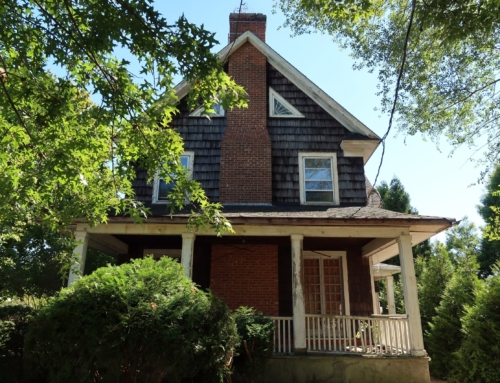Ronald Lewis has a broad smile on his face, as he ambles down the front steps of his newly-rebuilt home.
“Sure, come on back,” he says, motioning to the group of 25 tourists filing off a bus. He leads the way alongside the house to a glass-enclosed one-story structure at the back of the property. It houses Lewis’ personal collection of New Orleans memorabilia, information about Hurricane Katrina and the broken levees.
Lewis was just about the first person to move back to the 9th ward after the levees broke. In the past few months, a few of his neighbors have joined him. As darkness falls, their houses are a lighthouse in a sea of now-vacant lots, empty shells of homes and broken dreams.
“For a long time, I was the only one living anywhere near here,” he says, swinging his arm out expansively.
Sergio Palleroni, an architect and sustainable design expert at the University of Texas in Austin, said that just weeks after the levees broke in New Orleans, he paddled around the 9th ward in a boat.
“The water was up at the rooftops and we were paddling around trying to see what, if anything could be salvaged,” he recalled.
Later, after the water was drained, he said the 9th ward was like a war zone. “You’d come at night, and you couldn’t see anything. And then there’d be a little light, and it was Ronald Lewis, who came back before the 9th ward was even habitable.”
“My family did this, came back right away, when Hurricane Betsy came through New Orleans 40 years ago. I’m 55 years old and it’s the second time in my life we’ve come back,” he explained. “I’m on a mission.”
A mission to rebuild what was lost. Lewis says that he owns his home free and clear and wanted to be a flagship to show his neighbors what the rebuilding process could be.
Some of Palleroni’s students came to New Orleans to help Lewis rebuild.
“We worked and the kids came down for Spring break and stayed until August. They’re the most committed kids I’ve ever seen” Palleroni said. He recalled sleeping out at night in the 9th ward, night after night. “We sang songs and Ronald barbequed for us.”
“This was my home. This is my life. Whatever part I could contribute, I did,” Lewis said, adding, “I wanted to use this house as a vehicle to tell the story of why we came back to the Lower 9th ward, and why other people should, too.”
Although I traveled to the Lower 9th ward in early June, I continue to be haunted by images of vacant lots, overgrown foliage, crushed houses and rusting FEMA trailers. Only a tiny percentage of homeowners have returned to the Lower 9th ward, and perhaps just 10 percent have rebuilt their homes.
Driving past empty block after empty block, I began to wonder if the Lower 9th would ever be rebuilt. Would it return to what it was?
Can a neighborhood be a neighborhood if none of the neighbors come back?
Lewis’ house has become a magnet of sorts for a couple of neighbors. The neighbor behind his house is in the process of rebuilding and expanding his house. The house next door is an empty, dried-out shell. There’s another house across the street. It is very much like a small enclave of civilization in the wild west a hundred years ago.
Lewis says he doesn’t care how quickly people return. “When I became a man and got married, this was our home. I can’t get tired now because I’ve been given the mission to lead this community.”
“We’re rebuilding one house, one family at a time. We did it this way 40 years ago and now you can see life coming back into this community,” he said.
But his message to the tourists walking through his museum is one of community and communication.
“When you’re finished visiting, go home and tell your communities we still need help. We need financial assistance and other things to help us rebuild,” he says, turning around. “This here is one of the great American stories. American people are helping us, but we’re not done yet.”
For information on how to help residents of the Lower 9th Ward rebuild, go to Womenofthestorm.net.
Published: Jul 15, 2007






Leave A Comment